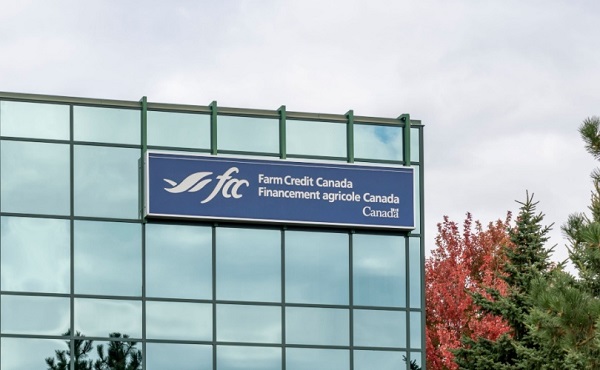Opinion
Budget 2019 – Don’t spend your new Canada Training Credit just yet

On March 19, 2019, the federal government tabled its election-year budget. One of the new provisions is a refundable credit called the Canada Training Credit. However, the $250 credit won’t even be available until you file your 2020 income tax return in April of 2021.
Further, if you are born in 1995 or later, you won’t qualify yet. If you were born in 1954 or earlier, you would never be eligible.
In addition, the maximum benefit you can receive is $5,000 in a lifetime (which will take 20 years to get at $250 a year) and the benefit can only be used to a maximum of 50% of eligible tuition costs.
So let’s consider the following scenario:
It is 2019 – you are 25 years of age making $27,000 a year and file your taxes every year.
You decide to take advantage of this credit and enroll in your first semester of schooling in the fall of 2023.
According to Statistics Canada, the average Canadian undergraduate pays $3,419 per semester.
So, you take time off work to go to school full-time in the fall, thus reducing your income by 1/3 in the year to $18,000.
Under the current 2019 rules, you would only have $39 in federal income tax. This amount is low because the tuition credits reduce your taxes.
By 2023, you have built up a “pool” of $250 per year after you turned 26, and believe you have a $1,000 pool available for that year.
When you file your 2023 return the $1,000 is triggered as a refundable tax credit. But you won’t be getting $961 back ($1,000 – 39).
Here’s the catch:
The $1,000 pool reduces the amount you can claim for tuition credits as well, which changes the tax owing to $189 Federal income tax. Meaning the $1,000 pool that you waited for is reduced by 15% by the time you pay it out.
Cash in jeans: $811.
But what if the course you decided to go into begins in January of 2023? You go for the January-April semester, work from May-August, and attend school September-December.
Using the same $27,000 – your income is now reduced by 2/3 while attending full time. Your income is only $9,000 as a result of the May-August period.
Your tuition (possibly paid through student loans) is $6,838 for the year.
Your tax is now zero because even before tuition credits you are below the Basic Personal Amount in your earnings.
Does this mean you get the full $1,000?
No.
Because your income is less than $10,000 in 2023, you don’t get the $250 for that year. As such, you only get $750, and your tuition credits available for carryforward are reduced by $750 as well, thus having a future negative impact on tax of $112.50.
Net result: $637.50 cash in jeans
What if you are a parent that decides to stay home with the kids until they are in school full time and go back to school in 2023?
Unfortunately, because you did not make more than $10,000 a year in any of the years, you get zero.
What if you were laid off, collecting regular EI benefits, and decide to go back to school?
Regular EI Benefits don’t qualify for the $10,000 income calculation. As a result, unless you had special EI benefits like parental leave or earned income from another source greater than $10,000, you don’t qualify.
What if you were self-employed through a small business corporation and paid yourself dividends instead of wages and then decided to upgrade your training?
Your dividend income does not qualify, and so you are not eligible for amounts to be added to the pool.
So assuming you qualify, and you wait the four years to build up a pool of $1,000 (remember that the $1,000 is only a net $850 because of the reduction in tuition credits). That same Statistics Canada report says that tuition is increasing at 3.3% per year. That means by you waiting four years so you can get the Net $850 means your annual tuition has likely increased from $6,838 to $7,786 ($948).
You waited four years, and the tax amount you receive won’t even cover the inflationary price increase on tuition.
In Conclusion
- Those that do qualify won’t see anything until April 2021; the actual net amount of what they will see is only $212.50; and their annual tuition will likely have increased by $225.65.
- Students under the age of 25 will see nothing;
- People over the age of 25 that don’t have more than $10,000 of income will see nothing;
- Seniors will see nothing;
- Parents looking to re-enter the workforce will see nothing; and
- People who have been laid off and have less than $10,000 of non-EI income will see nothing.
Seems like a lot of complex legislation for nothing.
—
Cory G. Litzenberger, CPA, CMA, CFP, C.Mgr is the President & Founder of CGL Strategic Business & Tax Advisors; you can find out more about Cory’s biography at http://www.CGLtax.ca/Litzenberger-Cory.html
Crime
Cocaine, Manhunts, and Murder: Canadian Cartel Kingpin Prosecuted In US

From Caledon to Mecca and Medellín: U.S. Says Toronto ‘Cocaine Lawyer’ Used Encrypted Chats Inside Wedding’s Murder Conspiracies
On the path to becoming the first Canadian of genuine Latin American cartel stature — a man the FBI has likened to a “modern-day iteration of Pablo Escobar” — Ryan Wedding did not simply exploit Canada’s borders, ports and highways to move cocaine, methamphetamine and fentanyl.
Prosecutors say he became the single largest cocaine importer into Canada, building a billion-dollar enterprise by mastering cryptocurrency money-laundering, legal strategy, paramilitary training and the kind of hardened operational security usually associated with state intelligence agencies.
It was an operation, U.S. authorities now allege, in which a brash Toronto criminal lawyer not only counselled murder and helped arrange bribes, but also tapped into Canadian police evidence to glean information about a contracted assassination that collapsed into tragedy — the killing of innocent people mistaken for the family of an Indo-Canadian narco-trucker.

A stunning 50-page indictment unsealed in California this week explains how Wedding allegedly discovered that a trusted associate in both cocaine trafficking and crypto-based money-laundering — identified only as “Victim A” in the document — had quietly become a federal informant. The murdered government witness is Jonathan Acebedo-Garcia, a Colombian-Canadian who appears in prosecutors’ Tether-crypto flow chart as a key node in Wedding’s KuCoin-centred laundering network.
According to the indictment, Wedding then turned to Toronto lawyer Deepak Balwant Paradkar — “a dual Indian-Canadian citizen” listed under aliases including “cocaine_lawyer” — and, together with his top lieutenant Andrew Clark, used encrypted Threema chats to plan Acebedo-Garcia’s murder in Medellín. For Paradkar, now under arrest in Canada and facing extradition, the brutality alleged in the filing is not confined to a distant Colombian restaurant. The indictment also places him at the centre of two other crises in Wedding’s empire: a 521-kilogram cocaine seizure in Arkansas, and a botched assassination in Caledon, Ontario, that left an innocent Indo-Canadian family dead.
The Arkansas strand starts on October 1, 2024, when Canadian truckers Maninderjit Singh Dhillon and Ranjodh Singh were stopped in Hazen, Arkansas, with “approximately 521 kilograms” of cocaine. That same day, Wedding told Clark on Threema that their load had been seized and sent Dhillon’s name. Clark then asked — in coded language — if Wedding wanted Paradkar “to monitor Dhillon and Singh’s arrests,” and Wedding agreed, suggesting that an American lawyer be used to obfuscate the Toronto lawyer’s role.
In a Threema group chat with Clark and a transport co-conspirator, Paradkar allegedly asked for the drivers’ names and licences, said he would “look into it,” and asked if there were “any relatives” he could contact. The key line in the indictment states:
“On October 1, 2024, in the Threema group chat and using coded language, defendant PARADKAR advised that he was calling law enforcement to obtain information about Dhillon and Singh’s arrests.”
Prosecutors say Paradkar later reported that he had located Singh in prison but not Dhillon, directed that Singh’s brother be told he was Singh’s lawyer so he could get the arrest report, and called Singh about his arrest “while Clark covertly listened in.”
When Clark and the co-conspirator began “discussing murdering Dhillon” on October 3, Paradkar allegedly told them “to discuss the matter on a different chat without him present and to delete any and all discussion of the murder plot.”
He is also accused of sending Clark discovery on the Arkansas case, drafting questions over WhatsApp, then deleting the messages and turning on disappearing-message settings before calling Dhillon again with Clark listening.
The same document links Wedding and Clark to an earlier hit order on another truck driver, CC-1, a driver they believed had stolen a massive load. Under a section headed “Victims B, C, and D,” prosecutors write that: “On or before November 20, 2023, defendant Wedding and Clark issued an order to kill a driver co-conspirator whom they believed stole 300 kilograms of cocaine from them.”
According to the indictment, members of a Canadian-based assassin crew then “broke into a rental property in Caledon inhabited by Victims B, C, and D” and “shot and killed Victims B and C and shot and wounded Victim D, mistakenly believing that they were CC-1’s family members.”
Local coverage at the time identified the slain couple as Jagtar Sidhu, 57, and his wife, Harbhajan Sidhu, 57, both killed by gunshot wounds after officers were called to a late-night shooting. Their daughter was rushed to hospital in serious but stable condition. In an interview, the couple’s son — speaking on condition of anonymity — said he had been at work when the shooting took place and that his parents and sister were shot multiple times. He said his parents had travelled from India to visit him and his sister, who had come to Canada as international students.
Nearly ten months later, Paradkar is again alleged to have somehow obtained sensitive information and channelled it from Canadian police back to cartel command:
“On September 11, 2024, via Threema, defendant PARADKAR sent Clark screenshots of evidence obtained by the Ontario Provincial Police during its investigation of the shootings of Victims B, C, and D.”
Before turning back to the Medellín murder allegedly counselled by Paradkar, the indictment sets out the staggering scale of the enterprise that made Acebedo-Garcia so valuable — and, allegedly, so expendable.
Prosecutors describe the Wedding Criminal Enterprise as “a billion-dollar drug trafficking organization and the largest supplier of cocaine to Canada,” operating simultaneously in “Mexico, Colombia, Canada, and the United States, among other countries.” They say the group sourced cocaine from Colombia, “cooking and testing it in ‘cocaine kitchens’ run collaboratively with a Colombian neo-paramilitary group and drug cartel,” then working “in conjunction with members and associates of prominent Mexican drug cartels” to move “hundreds of kilograms of cocaine from Colombia to Mexico at a time” by boat and plane.
In this telling, Southern California is the hub between Latin coca fields and Canadian and American drug dens.
“The Southern California Counties of Los Angeles, San Bernardino, and Riverside generally served as the ‘hub’ where the Wedding Criminal Enterprise’s cocaine was stored before being conveyed by Canadian drug transportation networks to final destinations in Canada and other American states, with the cocaine predominantly being distributed in Canada.”
The indictment says the enterprise’s purposes included “establishing control over the Canadian drug trade” and “violently retaliating” against anyone perceived to be co-operating with law enforcement.
As reported previously by The Bureau, the trucks and routes tasked by Wedding were controlled by Indo-Canadian crime networks. The U.S. government says that the Toronto lawyer Paradkar “introduced Wedding to the drug traffickers that have been moving Wedding’s cocaine and has also helped Wedding with bribery and murder.”
In late summer 2024, Acebedo-Garcia — Victim A — was still a trusted intermediary inside that system. Prosecutors allege that: “Between August 15, 2024, and September 6, 2024, using Victim A as an intermediary, defendant WEDDING purchased 300 kilograms of cocaine to be shipped from Colombia to Mexico.”
A Colombian lab manager, Carlos Eduardo Riascos, is then said to have received the order “for 300 kilograms of cocaine” from Wedding, and on September 11, 2024, to have been paid about two billion Colombian pesos which “had been converted from cryptocurrency” for “approximately 300 kilograms of cocaine.” Within weeks, Riascos allegedly launched a shipment of “approximately 240 bricks containing cocaine” out of Cali.
In parallel, U.S. authorities say they were mapping the Tether flows linked to this cargo. The truncated flow chart in the indictment shows large transfers moving from KuCoin accounts associated with financier Rasheed Pascua Hossain of Vancouver, and others into a hub wallet tied to Wedding — including a 564,571-USDT transfer directly from Wedding to Victim A. Those arrows, prosecutors argue, capture the way Acebedo-Garcia sat at the intersection of Wedding’s cocaine supply and his crypto-laundering machine.
On October 17, 2024, that world was exposed. A first superseding indictment, “Wedding I,” was unsealed in the same federal court, charging Wedding and Clark in a continuing-criminal-enterprise case. According to the new filing, it was in the aftermath of that disclosure — once it was clear that Victim A had become a co-operating witness — that the Toronto lawyer allegedly proposed killing him as a legal strategy.
“On or after October 17, 2024, defendant Paradkar advised defendant Wedding and Clark that if Victim A was killed, the charges against them in Wedding I and related extradition proceedings would necessarily be dismissed,” the record says.
In a prior exclusive report, sourced from U.S. law enforcement, The Bureau revealed that some American investigators believed Canadian police provided little assistance as bodies mounted.
“We tried to work with RCMP on Wedding too, and they said, ‘No,’” a source aware of probes from three separate U.S. agencies said. “He’s killed God knows how many. But the RCMP threw up roadblocks. Just in the Greater Toronto Area alone, people were falling once a week. Especially when the heat was getting closer to this guy, he started killing all the people he knew. And I think there were seriously missed opportunities.”
From Mecca to Medellín
Prosecutors say Wedding responded by placing “a bounty of up to $5 million USD on Victim A in exchange for any person locating and killing Victim A.” He allegedly enlisted a Laval, Que., hitman, Atna Ohna, described as “a hired sicario”; a Colombian madame, Carmen Yelinet Valoyes Florez, who “operated a network of commercial sex workers”; a Colombian sex worker, Daniela Alejandra Tejeda, who provided Victim A’s personal information; and a cluster of Canadian intermediaries and unidentified locals in Colombia and Saudi Arabia.
Once the U.S. government’s first indictment against Wedding was unsealed and Paradkar allegedly advised that killing Victim A would “necessarily” collapse the case, the manhunt for Acebedo-Garcia moved quickly. Florez, operating a Medellín-based commercial sex-work network that included Tejeda, allegedly used that network to track Acebedo-Garcia’s movements and glean intimate details — addresses, routines, contacts — that could be passed back to Mexico.
Canadian associates, meanwhile, were allegedly funnelling information from home. Defendant Ramon Basilio Demorizi, a Canadian resident, is accused of trying to locate Victim A through Edwin Basora-Hernandez, a Montréal-based reggaeton artist. Basora-Hernandez is alleged to have supplied Victim A’s contact information and to have told Demorizi — and, indirectly, Wedding and Paradkar — that Canadian law enforcement had approached him seeking Victim A’s whereabouts. According to one overt act, it was at this point that Wedding himself stepped into the hunt.
Assuming the persona of a lawyer, he allegedly arranged a conference call with Basora-Hernandez and his real-life legal counsel, Deepak Paradkar, during which Basora-Hernandez revealed that Canadian law-enforcement officers had approached him for information about the fugitive witness’s whereabouts.
In January 2025, Clark allegedly hired a Canadian associate, Ahmad Nabil Zitoun, to physically hunt Acebedo-Garcia for “approximately $10,000 CAD plus expenses.” Zitoun is accused of travelling to Medellín and then to Mecca, Saudi Arabia, trying to spot the fugitive witness. While he was in Mecca, the indictment says, Clark offered him the actual murder contract. Zitoun declined — but still received “approximately $40,000 CAD for attempting to locate Victim A” once he returned.
Throughout these weeks, the document alleges, the conspirators were sending each other surveillance pictures of Acebedo-Garcia.
The assassination itself, on January 31, 2025, reads like a textbook cartel hit. One unidentified conspirator, LNU 1, is described as a motorcyclist who “conducted reconnaissance of Victim A by following Victim A to a restaurant in Medellín before Victim A was murdered.” Another, LNU 2, is said to have been the shooter: “Defendant LNU 2, a motorcyclist, shot Victim A approximately five times in the head while he was eating at the Restaurant.”
A third, LNU 3, allegedly ferried the gunman away; a fourth, LNU 4, is described as a photographer who “cased the Restaurant” beforehand and “photographed Victim A’s dead body” afterwards; and a fifth, LNU 5, picked the photographer up and helped him flee along the same escape route as the shooter.
Within minutes, prosecutors say, images of the killing were being sent back up the chain. On January 31, Wedding allegedly used Threema to inform Clark that “Victim A was dead” and to send a photograph of his corpse.
And then the murder became content. Defendant Gursewak Singh Bal, a Mississauga man described as the founder of “the Dirty News” urban news outlet, is accused of posting a celebratory Instagram story showing the restaurant and the lower half of a body, with the caption: “[Victim A] down…” and “BOOM! Headshot.” A longer Dirty News post, quoted in the indictment, called Acebedo-Garcia “one of the informants involved in dismantling Ryan ‘Snowboarder aka SB’ Wedding’s transnational organization/criminal network” and claimed “there were bounties being placed on every individual involved in ‘snitching’ on the kingpins operations,” including seven-figure “hits.”
more to come on this breaking story
The Bureau is a reader-supported publication.
To receive new posts and support my work, consider becoming a paid subscriber.
Health
CDC’s Autism Reversal: Inside the Collapse of a 25‑Year Public Health Narrative

 James Lyons-Weiler, PhD, for Popular Rationalism
James Lyons-Weiler, PhD, for Popular Rationalism
On November 19, 2025, quietly and without ceremony, the U.S. Centers for Disease Control and Prevention updated its website and rewrote one of the most politically charged sentences in modern American medicine. A sentence that had been treated as gospel—“Vaccines Do Not Cause Autism”—was suddenly recast as something far more fragile. In the CDC’s own words, the slogan “is not an evidence‑based statement” because available studies “have not ruled out the possibility that infant vaccines contribute to the development of autism.”
Yet the headline still sits atop the page. Not because the CDC stands behind it, but because a U.S. Senator demanded it stay. CDC states plainly that the headline remains only due to an agreement with the chair of the Senate HELP Committee. A mandated political slogan now presides over a scientific reversal.
The body of the page reads like a confession. It acknowledges that key infant vaccines—including HepB, DTaP, Hib, PCV13, IPV, rotavirus, and influenza—have never been studied for autism outcomes. It admits that earlier studies used to justify the categorical claim were incapable of ruling out causation. It concedes that mechanistic and associative findings were ignored by health authorities. And it promises, for the first time, an HHS‑led effort to conduct “gold‑standard science” to evaluate whether early‑life vaccination can contribute to autism.
This moment did not arise in a vacuum. It is the final surface rupture of a 25‑year fault line running beneath CDC’s public messaging—a story of suppressed signals, discarded testimony, unpublished findings, internal dissent, FOIA‑released emails, whistleblower documents, and a lawsuit that forced CDC to walk back its own claim once before
The Early Warnings CDC Never Told the Public
In July 1999, the American Academy of Pediatrics and the U.S. Public Health Service issued a joint public statement urging the reduction or elimination of thimerosal in childhood vaccines. The stated reason was “an abundance of caution.” But in internal memos from FDA scientists revealed something more urgent: infants receiving vaccines according to the CDC schedule were exposed to mercury levels far exceeding EPA safety limits.
Behind the scenes, the alarm was palpable; in public, the message was reassurance.
One year later, in June 2000, CDC convened a closed‑door meeting at the Simpsonwood Retreat Center near Atlanta. The meeting brought together CDC officials, vaccine company representatives, and outside consultants to review early analyses from the Vaccine Safety Datalink (VSD). The transcript—obtained via Safeminds by FOIA—shows CDC epidemiologist Thomas Verstraeten presenting a dose‑dependent association between thimerosal exposure and neurodevelopmental disorders, with findings concerning enough that multiple attendees warned of “what this will mean” if made public.
In the months that followed, internal CDC emails—eventually released through persistent FOIA litigation—show Verstraeten repeating the same refrain: “It just won’t go away.” The association persisted despite multiple rounds of analytical restructuring.
But as the signal persisted, the public narrative hardened: vaccines are safe, and no link to autism exists.
2001: The IOM Frames the Outcome Before Reviewing the Evidence
In January 2001, the Institute of Medicine’s Immunization Safety Review Committee met to determine how it would approach vaccines‑and‑autism questions. The committee made two decisions that shaped every subsequent conclusion.
First, the IOM reported they would not review experimental animal data or mechanistic toxicology because the committee did not have “a free weekend” to do so.
Second, as revealed in the same transcript, the chair, Harvard pediatrician Marie McCormick, stated that CDC “wants us to declare” vaccines safe and that the committee was “not ever going to come down that autism is a true side effect.”
Study director Kathleen Stratton added that the predetermined outcome—“inadequate to accept or reject”—was the result “Walt wants,” referring to Walter Orenstein, then head of CDC’s National Immunization Program.
These statements were later entered into the Congressional Record.
The outcome—before any evidence was evaluated—was set.
The Verstraeten Disappearance
In 2002, before CDC’s thimerosal paper was published in Pediatrics, lead author Thomas Verstraeten left CDC to work for GlaxoSmithKline (GSK), a company producing thimerosal‑containing vaccines. The conflict was not disclosed in the paper.
2004: How Testimony and Mechanisms Were Removed
The IOM’s 2004 report on vaccines and autism excluded parental accounts of regression, mechanistic submissions detailing neuroimmune pathways, autism evidence involving vaccines other than the measles, mumps and rubella (MMR) vaccine and the growing literature on thimerosal‑related neurotoxicity.
Although the committee acknowledged that vaccines might trigger autism in a small biologically susceptible subset, it declared such a possibility insufficient to justify further research. It was the line CDC and AAP repeated for years.
At the same moment, statistician C.P. Farrington issued a methodological warning about the self‑controlled case series (SCCS) method—central to CDC’s MMR studies—explaining that SCCS can mask population‑level effects. This concern fell on deaf ears.
2007–2008: The Poling Precedent
In the Hannah Poling case, the federal government formally conceded via NVICP summaries that vaccines triggered a mitochondrial encephalopathy that manifested as autism.
This was the government’s first—and still one of its only—acknowledgments that vaccine‑induced autism can occur in a susceptible individual.
2014: The Whistleblower
CDC senior scientist Dr. William Thompson released a statement admitting that statistically significant findings related to MMR timing, race, and autism were omitted from a 2004 CDC study. His statement is preserved in the webarchive.
In 2015, Congressman Bill Posey read Thompson’s documents into the Congressional Record. In that same year, the groundbreaking documentary VAXXED reviewed the manipulation and destruction of data by CDC employees to bury the strong association of on-time MMR vaccination
2017: HHS Admits It Never Performed Required Vaccine Safety Reviews
Under pressure from a sweeping FOIA request, HHS disclosed that it had not performed the periodic vaccine safety reviews required under the 1986 National Childhood Vaccine Injury.
2017–2023: Aluminum, Microglia, and the Rewriting of Neuroimmunology
A growing scientific literature revealed significant concerns that aluminum in vaccines may play a increasing role: aluminum brain retention, macrophagic myofasciitis, dose‑dependent aluminum toxicity and toxicokinetic and clearance concerns.
Simultaneously, in a landmark review, the HHS Inspector General confirmed extraordinary underreporting in the Vaccine Adverse Events Reporting System.
These findings undermined the assumption that injected aluminum rapidly clears the body.
2018–2024: Maternal Immune Activation (MIA), IL‑6, and Autism Biology
Research on maternal immune activation reshaped autism biology indicates a direct role IL‑6–driven microglial priming, microglial dysregulation and pruning deficits, and immune‑activation neurodevelopmental changes.
These pathways perfectly match parental reports of regression following immune triggers, including fever and vaccination.
The 2018 IPAK Systematic Review
A systematic analysis by the Institute for Pure and Applied Knowledge (IPAK) examined 48 studies used by CDC and AAP to support the “vaccines do not cause autism” claim. The full report found that the key studies sent to President Trump in his first term, the average study quality score was –6.61 (on a scale where +12 represents a robust design); only one study scored above zero; most did not measure autism prevalence; none compared vaccinated vs. never‑vaccinated children; nearly all were retrospective correlation studies, unable to test causation. many were underpowered, overadjusted, or structurally incapable of detecting subgroups; and that studies showing associations were absent from CDC’s curated lists.
The Lawsuit That Forced CDC’s First Retraction
In the late 2010s, the Informed Consent Action Network (ICAN), led by Del Bigtree, filed a Data Quality Act challenge demanding CDC produce evidence that all vaccines on the infant schedule do not cause autism. CDC could not produce such evidence. The slogan was removed.
Under court order, the slogan was reinstated—until CDC’s 2025 update disavowed it again although the header remains as a purely political concession.
CDC’s 2025 Admission: The Narrative Has Collapsed
CDC now acknowledges that many infant vaccines have never been studied for autism. The website correctly reports that observational studies used to date cannot rule out causation. It also reports that mechanistic pathways were not evaluated. Most importantly, it reports that evidence showing association was ignored or suppressed.
The header, “Vaccines Do Not Cause Autism”, sticks out like a sore thumb, a\ reminder that it exists only because a U.S. Senator demanded it stay.
This is more than scientific refinement; it is a reckoning.
What Gold‑Standard Science Would Actually Require
A real determination about vaccines and autism would require a mix of retrospective prospective cohorts with fully unvaccinated controls. Genetic susceptibility profiling would be tracked with vaccine exposure and machine learning prediction modeling used to study exactly which risk factors could have predicted who would have developed autism. The prediction models optimized retrospectively would be to test prospectively and autism rates compared in kids removed from the vaccine schedule via clinical risk prediction.
Parents as Witnesses
For decades, parents have described regression events following vaccination—loss of language, eye contact, sociability, and developmental progress. CDC now admits these observations have never been properly studied.
These accounts are no longer anomalies—they align with known pathways of neuroimmune disruption.
Conclusion
CDC’s 2025 update is not a scientific conclusion. It is a confession of malfeasance by an organization whose entire paradigm on vaccine risk has not risk management, but rather, risk perception manipulation.
The question was never settled in spite of sufficient evidence that the correct studies are warranted.
“Gold‑standard science” is coming—twenty‑five years late. CDC is not changing its language because new evidence emerged. It is changing its language because the evidence it once relied upon was never sufficient to justify the claim.
Popular Rationalism is a reader-supported publication.
To receive new posts and support my work, consider becoming a free or paid subscriber.
-

 Alberta2 days ago
Alberta2 days agoNational Crisis Approaching Due To The Carney Government’s Centrally Planned Green Economy
-

 Carbon Tax1 day ago
Carbon Tax1 day agoCarney fails to undo Trudeau’s devastating energy policies
-

 Business1 day ago
Business1 day agoThe UN Pushing Carbon Taxes, Punishing Prosperity, And Promoting Poverty
-

 Agriculture2 days ago
Agriculture2 days agoFederal cabinet calls for Canadian bank used primarily by white farmers to be more diverse
-

 Health1 day ago
Health1 day agoNEW STUDY: Infant Vaccine “Intensity” Strongly Predicts Autism Rates Worldwide
-

 Business24 hours ago
Business24 hours agoClimate Climbdown: Sacrificing the Canadian Economy for Net-Zero Goals Others Are Abandoning
-

 Great Reset2 days ago
Great Reset2 days agoCanadian government forcing doctors to promote euthanasia to patients: report
-

 Artificial Intelligence22 hours ago
Artificial Intelligence22 hours agoLawsuit Claims Google Secretly Used Gemini AI to Scan Private Gmail and Chat Data




